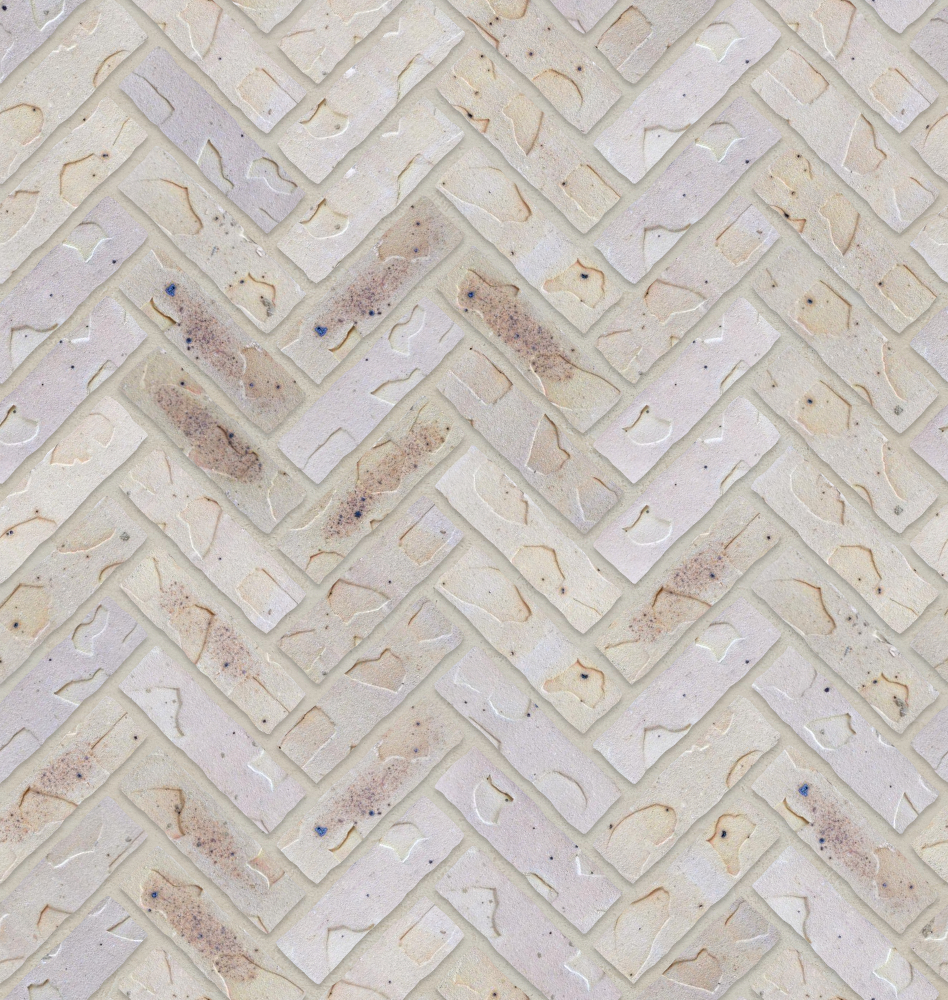Stamped Brick Herringbone
Category
Brick
Download
Edit
Light, soft, pastel colours ranging from white and silver peaches, pinks and reds to blonde, rust and brown characterise this textured brick finish. The buff colours displayed are a departure from the traditional reds and browns of traditional bricks which, combined with some earthy tones, form a gentle, balanced hue suitable for residential, healthcare, education and workplace facades, cladding, or internal walls. Buff colours can be created from clay with high lime content which produces white and yellow tones, or from pigments and minerals in a cement-based mixture. There are a number of navy blue and black spots present, varying in concentration and density, likely due to the mineral content of the raw clay mixture and temperatures at which the bricks were fired. The wide array of colours, tones and burnt patches evident in some areas are suggestive of the variety of natural base materials used in this texture.
Stamped bricks are similar in formation and properties to regular bricks, but the clay or cement brick mixture is laid in shaped and grooved moulds before the heating process to create a unique finish. The colour and size of stamped bricks can vary depending on mineral combinations and factory manufacturing methods. Stamped bricks are ideal for building facades, cladding, gardens, landscaping, and internal decoration, adding an interesting and varied surface finish. The resultant, otherwise smooth texture varies in height and is reminiscent of handmade bricks, which were normally imprinted or ‘stamped’ with the location and date when they were made which, combined with the lovely, neutral, soft colours of this brick texture create a balance between contemporary intrigue and a traditional, aged, aesthetic.
Bricks are one of the most common materials in architecture and construction, with origins dating back to 7000BC. Popular due to their low maintenance, durability, and attractive variety of colours, textures, and finishes, bricks are used in cladding for building facades, landscaped walls, paving, and interior decorative walls. Bricks are popular in architecture and construction due to their durability, standard sizing, low cost manufacture, low skill assembly and excellent thermal properties. Versatile, durable and hard-wearing with excellent load-bearing properties, they are a popular, efficient, human-scaled material for paving, load-bearing walls, cladding, landscaping; rustic, industrial interiors, or practical, perfunctory settings. The decorative, light, mellow buff tones of this brick texture lend a softer, more modern feel to a classic, widely utilised material and can be used to add a humane touch to delicate, serene environments, to contrast a more visually active or bold colour, or to compliment a variety of man-made or synthetic materials and surface finishes for a wholesome, balanced atmosphere.
A seamless brick texture with stamped brick arranged in a herringbone pattern. Seamless textures can be tiled repeatedly across a surface without visible seams making them useful for architectural drawings and 3D models. This image can be used as a SketchUp texture, Revit material or imported into Photoshop for use in 2D illustrations. A high resolution version of this texture is available, as well as CAD hatches and PBR maps with Architextures Pro.

